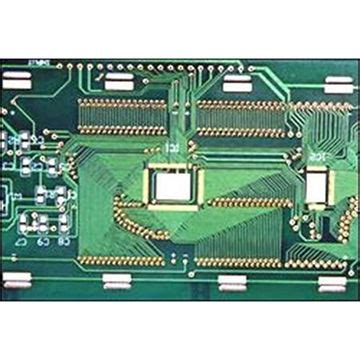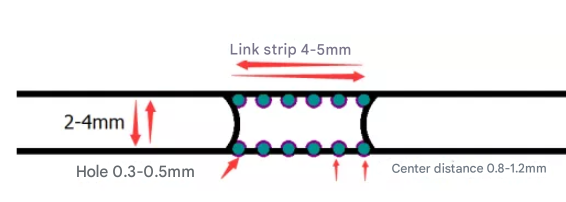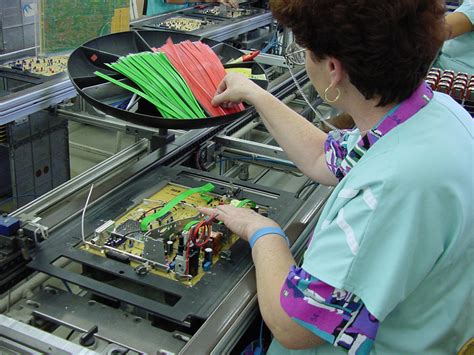Mastering Precision: The Art of Control Board Assembly
Key Takeaways
In the realm of pcb assembly, mastering the intricate process of control board assembly involves a comprehensive understanding of various key factors. One of the primary takeaways is the significance of utilizing essential tools and materials to ensure precision during pcba. Having the right tools, such as soldering irons, PCB holders, and multimeters, plays a vital role in achieving optimal results. Furthermore, following step-by-step techniques can significantly enhance efficiency in producing high-quality control systems. It’s equally important to implement best practices tailored for accuracy in design and functionality. This includes adhering to strict guidelines during layout and ensuring that components are placed correctly to minimize errors. Recognizing common challenges that arise in pcba is fundamental; for instance, understanding potential pitfalls like defective components or misaligned traces can lead to effective solutions. Moreover, establishing robust quality control measures throughout the assembly process guarantees that every product meets industry standards. Lastly, keeping an eye on innovations in control board manufacturing technologies can bolster those involved in assembly processes by offering new tools and methodologies that enhance overall productivity while paving the way for future trends that will shape how we approach control board assembly techniques.
Understanding the Basics of Control Board Assembly
Control board assembly, commonly referred to as PCB assembly or PCBA, is a critical process in the manufacturing of electronic devices. At its core, it involves bringing together various electronic components onto a single board to create a functional assembly. This process can be both intricate and rewarding, as it requires not only a solid understanding of electronic principles but also the application of precise techniques. Key aspects of control board assembly include understanding the layout and design specifications that dictate how components are arranged on the circuit board.
A successful PCB assembly begins with comprehension of the schematics involved. These schematics act as blueprints, guiding assemblers on how to position components like resistors, capacitors, and integrated circuits accurately. It is essential for assemblers to familiarize themselves with both surface mount technology (SMT) and through-hole technology (THT), as each method presents unique challenges and benefits.
To enhance efficiency in this process, awareness of essential tools and materials is crucial. For example, soldering equipment, placement machines, and inspection tools must be readily available for accurate execution. The utilization of these tools can significantly affect the overall quality of the assembly produced.
In assembling control boards, attention must also be paid to quality control measures that should be integrated throughout each phase. Conducting inspections at various stages guarantees that any potential issues are resolved before finalizing the product, ensuring that it meets rigorous industry standards.
In conclusion, mastering the art of control board assembly requires a blend of technical knowledge, practical skills with tools such as soldering irons and pick-and-place machines, and an understanding of best practices in electronics manufacturing. With these fundamentals in mind, one can embark on a journey toward creating high-quality assemblies that stand out in today’s competitive market.
| Key Components | Description |
|---|---|
| Resistors | Control current flow |
| Capacitors | Store electrical energy |
| Integrated Circuits (ICs) | Miniaturized circuits performing specific functions |
This table summarizes some fundamental components used in control board assembly, illustrating their roles within electronic designs essential for achieving optimal performance.
Essential Tools and Materials for Precision Assembly
To achieve excellence in pcb assembly, it is crucial to have a well-curated selection of tools and materials. At the heart of the pcba process lies the soldering iron, a fundamental tool that allows for precise application of heat to join electronic components to the printed circuit board. Accompanying the soldering iron, a reliable multimeter is essential for testing connections and ensuring that each joint meets quality standards. Additionally, employing tweezers with fine tips will facilitate accurate placement of small components, thereby enhancing the overall assembly precision.
Moreover, it is advisable to invest in high-quality solder suitable for your specific application. Lead-free solder options are increasingly popular due to their sustainability and safety benefits. Pairing this with flux can improve the flow and adhesion of solder, resulting in robust connections that maintain performance integrity over time. Furthermore, utilizing an anti-static mat protects sensitive electronic components from damage during assembly.
Finally, proper organization of all materials using storage solutions will streamline your workflow. Keeping components labeled and easily accessible fosters an efficient assembly environment that minimizes errors. By equipping oneself with these essential tools and materials, one can masterfully navigate the complexities of control board assembly, ensuring not just functionality but also robustness in design.
Step-by-Step Techniques for Effective Control Board Assembly
When it comes to control board assembly, or pcb assembly, mastering the process is essential for producing reliable products. Begin by preparing your work environment; a clean and organized space not only enhances productivity but also minimizes the risk of errors. Next, ensure that your pcba components are sorted and checked against your bill of materials—a crucial step that ensures you have all necessary parts before you begin soldering.
Start with the placement of components on the control board, prioritizing smaller and lower-profile elements, which often include surface-mounted devices that require precise positioning. Utilize tools such as tweezers or vacuum pickup tools to handle these tiny parts meticulously; this attention to detail is vital for maintaining accuracy.
Once the components are in position, move on to soldering. For hand soldering, it’s recommended to use a fine-tipped soldering iron for precise application of solder at each joint. The correct temperature setting is also essential—too high can damage delicate components, while too low may result in poor connections.
After soldering, it’s crucial to inspect each connection visually or through an automated optical inspection (AOI) system to verify quality before proceeding. Following these steps ensures that your pcb assembly adheres to best practices, resulting in high-quality control board assembly that meets industry standards. By focusing on every stage of the process, from preparation through inspection, you lay a solid foundation for effective production and reliable performance in control systems.
Best Practices for Ensuring Accuracy in Design
Achieving precision in pcb assembly is fundamental for the reliability and functionality of any electronic device. One of the best practices to enhance accuracy in design involves meticulous planning and adherence to design specifications. It’s crucial to utilize high-quality components that fit the design criteria, as subpar materials can lead to significant issues downstream. Implementing a robust review process during the design phase can catch errors before they escalate. Furthermore, employing simulation tools can help visualize how the pcba will perform under various conditions, thus reinforcing accuracy.
Testing prototypes at different stages of assembly allows for adjustments that can prevent costly errors later on. Another key element is maintaining organized workspace and effective documentation; this ensures that every step of the assembly process is clear and replicable. Equally important is keeping communication open between team members; sharing insights on placement, soldering, and layout can significantly improve overall cohesion in the manufacturing process.
“Effective documentation not only supports current projects but serves as a valuable resource for future endeavors.”
In addition, staying updated with industry standards and best practices will help in ensuring compliance and high-quality outputs in pcb assembly projects. By incorporating these best practices into the control board assembly process, companies can enhance accuracy, streamline production, and ultimately deliver superior products to their clients.
Common Challenges in Control Board Assembly and Their Solutions
The process of PCB assembly (or PCBA) is often fraught with various challenges that can hinder the efficiency and accuracy of creating reliable control systems. One prominent issue is component misalignment, which can occur due to insufficient attention during the placement phase. This misalignment can lead to connectivity issues or even failures in the functionality of the board. To mitigate this, employing automated pick-and-place machines with advanced vision systems can greatly enhance precision during assembly, ensuring that components are accurately positioned.
Another common challenge is thermal management, where overheating during soldering processes can damage sensitive components. To address this, it’s essential to optimize soldering temperatures and times while using thermal relief strategies and heat sinks where necessary. Moreover, managing PCBA designs for thermal performance from the outset can significantly reduce overheating risks.
Additionally, there are challenges related to solder quality, such as voiding, which compromises joint integrity. Implementing rigorous inspection techniques, such as X-ray or automated optical inspection (AOI), helps ensure that solder joints are free from defects before proceeding with further assembly stages.
Lastly, supply chain variability can lead to inconsistency in materials used for control board assembly processes. Establishing strong relationships with reliable suppliers and adhering to strict quality controls are vital in maintaining a steady flow of high-quality components. By recognizing these common challenges in PCB assembly and proactively seeking solutions, manufacturers can greatly enhance their production quality and efficiency.
Quality Control Measures in the Assembly Process
Quality control measures are crucial in the pcb assembly process, as they ensure that every component meets the necessary specifications and works as intended. Implementing rigorous quality control standards can significantly reduce the likelihood of defects, which can lead to costly reworks or product failures. Among the key practices is inspecting components before assembly, ensuring that each piece is free from damage or defects. Additionally, incorporating both visual inspections and automated testing during various stages of assembly enhances the overall reliability of the pcba. Another important aspect involves regular calibration of assembly equipment, which helps maintain precision and consistency throughout production. By following best practices such as these, manufacturers can achieve high-quality results in their control board assemblies, thereby fostering trust with their customers and ensuring long-term success in a competitive market. Moreover, documenting each step within the assembly process allows for better traceability and aids in identifying areas for improvement, further enhancing the efficiency and quality of future pcb assembly projects.
Innovations in Control Board Manufacturing Technologies
The realm of pcb assembly has witnessed a remarkable transformation thanks to the advent of innovative manufacturing technologies. These advancements not only streamline the pcba process but also enhance the overall quality and efficiency of control board assembly. One notable innovation is the use of advanced automated assembly machines that significantly reduce human error and increase production speed. Through precision robotics, manufacturers can achieve intricate placements of components with unmatched accuracy, leading to superior solder connections and ultimately more reliable control systems. Furthermore, innovations such as 3D printing and laser technology enable designers to create complex geometries that were previously impossible or too costly to achieve with traditional methods. This fusion of technology not only meets the growing demand for smaller, more efficient devices but also promotes sustainability by minimizing waste during manufacturing. As these cutting-edge techniques continue to evolve, they pave the way for future trends in pcb assembly, ensuring that high-quality control systems are produced with greater efficiency and less environmental impact. Consequently, staying informed about these developments is essential for professionals dedicated to mastering precision in control board assembly.
Future Trends in Control Board Assembly Techniques
As the field of control board assembly (or PCB assembly, often abbreviated as PCBA) continues to evolve, several future trends are emerging that promise to enhance both accuracy and efficiency in the assembly process. One notable trend is the increasing integration of automation technology, which can drastically reduce the time required for assembly and minimize human error. Automated systems equipped with advanced robotics can handle complex tasks such as component placement and soldering with precision, ensuring consistent quality across production runs. Additionally, the emergence of artificial intelligence in PCB assembly allows for real-time monitoring and adjustment of parameters, paving the way for smart factories capable of optimizing workflows dynamically.
Moreover, there is a growing emphasis on sustainability within the control board assembly sphere. Manufacturers are exploring eco-friendly materials and processes that reduce waste and energy consumption. Innovations such as lead-free soldering and recyclable components are becoming standard practices, aligning with environmental regulations and consumer demands for greener technologies.
Furthermore, miniaturization remains a significant trend influencing PCBA techniques. As electronic devices become smaller and more powerful, the demand for compact control boards necessitates refined assembly methods that can accommodate denser layouts without sacrificing performance or reliability. This challenge is being met with advanced techniques like surface mount technology (SMT), which enables more components to be placed on a smaller board area while maintaining high standards of precision.
In summary, these trends highlight an ongoing commitment to innovation within control board assembly, emphasizing efficiency through automation, sustainability through eco-friendly practices, and adaptability through miniaturization technologies. As these developments unfold, they promise to reshape the landscape of pcba, ensuring not only high quality but also future readiness in this dynamic industry.
Conclusion
In wrapping up our exploration of the art of control board assembly, it is essential to reflect on the critical aspects that contribute to the success of pcb assembly processes. Mastering pcba techniques requires an understanding of both the foundational principles and modern innovations in technology. Implementing best practices enhances accuracy, which is vital for producing reliable control systems that meet industry standards. Moreover, recognizing common challenges and their respective solutions can significantly streamline production efforts, leading to improved efficiency and diminished error rates. As we look to the future, advancements in control board manufacturing technologies promise to further refine pcb assembly methods, offering exciting opportunities for those dedicated to the craft. By consistently prioritizing quality control measures and remaining adaptable to emerging trends, professionals in this field can continue to elevate their practices and deliver exceptional results in every project.
FAQs
What is PCB assembly?
PCB assembly, often referred to as PCBA, is the process of soldering electronic components onto a printed circuit board. This process is crucial for creating functional electronic devices.
What tools are essential for control board assembly?
Essential tools include a soldering iron, a multimeter, and various hand tools such as pliers and cutters. Each tool plays a significant role in ensuring precision during the PCBA process.
How can I ensure accuracy in PCBA?
To ensure accuracy in pcb assembly, adopt best practices such as thorough planning, component verification, and regular quality checks throughout the assembly process.
What common challenges arise during control board assembly?
Common challenges include misalignment of components, soldering defects, and improper handling of sensitive devices. Implementing strict quality control measures can help mitigate these issues.
What innovations are currently shaping PCB manufacturing technologies?
Innovations such as automated assembly processes, advanced materials, and eco-friendly soldering techniques are transforming the landscape of pcb assembly, enhancing efficiency and quality.






